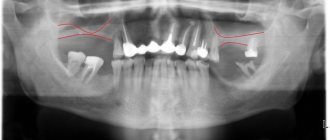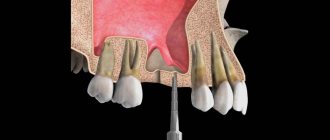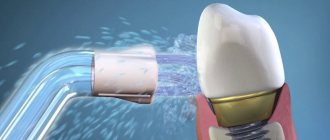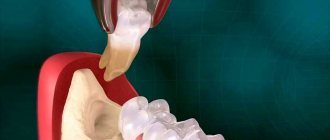A sinus lift is a procedure aimed at restoring lost bone tissue. Where there is insufficient volume, this procedure allows the installation of implants.
Sinus lift is a popular procedure. The term is clear to specialists working in the field of implantology, but means little to ordinary people. This also applies to potential patients who are planning to use the services of orthopedic surgery.
Complications after sinus lift
deserve separate consideration. This is not a new procedure; it has been used in implantology for the past 30 years. The first experiments were not the most successful. This is why specialists have an incentive to develop improved materials and tools.
When is a sinus lift indicated?
The structure of the bones of the upper and lower jaws has a significant difference. Both of them form the basis of the facial skeleton. Chewing, swallowing, speaking and breathing are just a few of the functions they perform. Sinus lifting is aimed at restoring bone tissue by creating optimal bone volume. This is achieved by introducing bone growth material into certain areas. Such zones are located under the maxillary sinus. There is no trauma during the procedure. Over time, the stimulator turns into ordinary bone tissue and grows with blood vessels. This is an excellent basis for placing a dental implant.
Perforation of the maxillary sinus
The most common and specific possible complication of sinus lifting is perforation of the protective membrane of the maxillary sinus with infection or penetration of osteoplastic material. Perforation does not always lead to any adverse consequences, since much depends on its size.
The dentist’s actions depending on the degree of perforation:
- Perforation up to 2 mm does not require any intervention from a doctor and heals on its own. A fixed membrane will provide additional protection against progression of rupture and movement of osteoplastic material.
- Perforation of the membrane up to 4 mm in size can lead to various adverse consequences, and therefore requires prompt surgical intervention. The rupture is not severe enough to interrupt the sinus lift, but sutures are still required. Thus, the doctor prevents further enlargement of the hole and prevents infection.
- Perforations greater than 4 mm are a serious complication that requires refusal from further sinus lifting. The doctor focuses entirely on eliminating the perforation and preventing foreign elements from entering the sinus. After a while, it is possible to perform a sinus lift again.
Perforation of the maxillary sinus is a fairly common complication of this type of bone grafting. In such a situation, the main task of the surgeon is to detect the problem in a timely manner and minimize the adverse consequences of the error.
What dangers do you have to deal with?
Many patients are afraid of surgery because they believe that the maxillary sinus may be damaged. If you end up in the hands of a good doctor, there is no need to be afraid of this. This should not be an ordinary implantologist, but an oral and maxillofacial surgeon. Modern sinus lifting has nothing in common with the outdated techniques previously practiced in surgery. The risk of complications is minimized here. Modern operation:
- Painless;
- Carried out using ultrasound;
- Requires only local anesthesia;
- Does not require general anesthesia.
- Sometimes the procedure takes no more than 15 minutes.
Spacer resorption
One of the most common complications of sinus lift, which is closely related to the presence of perforations in the mucous membrane. The normal loss of volume of osteoplastic material is considered to be 15-30% of the total amount of spacer. A more significant leaching of material is considered a complication, which nullifies the result of sinus lifting.
This unfavorable outcome of the operation cannot be noticed from the outside, since it is asymptomatic. In order to identify the problem in a timely manner, the dentist should prescribe patients a repeat CT scan to assess the condition of the operated area. If resorption does occur, then repeated surgery is performed after some time.
Complications after sinus lift: can they be avoided?
A lot depends on the patient. He must strictly follow the dentist's advice. Complications can be dangerous, so you should not treat them irresponsibly. If all instructions are followed, adverse effects are also possible. This indicates a lack of detailed examination before surgery. That is why it is wrong to say that sinus lifting is necessarily associated with complications. They are possible in two cases:
- When a patient is negligent about his health;
- When a doctor approaches a procedure irresponsibly.
Various complications are possible after sinus lift
. Symptoms that should alert you:
- heat;
- bleeding;
- difficulty in nasal breathing.
The dentist monitors each patient for several days after the intervention. The first visit is after 3 days. The doctor only needs to look at the operated area once to draw conclusions about the patient’s compliance with all the recommendations prescribed to him. If there are problems, the doctor immediately eliminates them. In the worst case, when the patient gets to an amateur, no attention is paid to his well-being. Then the person can only independently determine whether there are deviations from the norm and contact another dentist.
Pain and other similar complications after sinus lift
do not occur normally! Even if you just feel unwell without any external signs, go to the doctor!
Associated symptoms
In addition to swelling in the first days after surgery, you may be concerned about:
- local pain in the area of the operation;
- redness of the gum tissue;
- temperature rise to subfebrile levels;
- slight secretion of lymph mixed with blood (ichor).
Depending on the volume of the operation, the amount of osteoplastic material introduced and implants installed, the severity of the above symptoms may vary.
The contract for treatment at our Center must indicate all acceptable postoperative conditions. Please read them carefully and the list of possible inconveniences.
Sinusitis
Speaking about complications after sinus lift
, the symptoms of sinusitis are considered leading. The doctor may damage the Schneiderian membrane. It is located in the area of the maxillary sinuses. This is possible if the dentist uses hand instruments instead of an ultrasonic device. An infection gets into the upper jaw, causing sinusitis or sinusitis. Exacerbation of sinusitis is a contraindication to sinus lift. The disease must first be cured. Usually the doctor prescribes a 2-week course of antibiotic therapy.
Allergy to anesthetics
A serious complication during a sinus lift may occur due to intolerance to anesthetics for local anesthesia. An allergic reaction to lidocaine-type drugs is a dangerous condition called anaphylaxis and requires immediate resuscitation measures.
Clinical picture of anaphylaxis:
- the problem occurs a few minutes after administration of the medicine;
- shortness of breath (shallow rapid breathing);
- severe swelling;
- severe tachycardia;
- loss of consciousness due to a drop in blood pressure;
- severe pallor;
- patient's panic.
The doctor’s task is to immediately increase blood pressure readings. This is achieved by administering adrenaline. Then the allergic reaction itself is stopped by using hormonal drugs (prednisolone, hydrocortisone). The patient’s life depends on the speed and correctness of the doctor’s actions, but survival rate during anaphylactic shock remains low.
It is easy to avoid such a complication - a provocative test is performed before administering the anesthetic. To do this, small and diluted concentrations of the drug are administered intradermally and the reaction is observed. In addition, modern anesthesia involves the risk of anaphylaxis, and therefore anesthesia drugs contain small amounts of adrenaline.
What should you not do to prevent complications after a sinus lift?
Adviсe
Physical activity
- Physical activity should be minimal on the day of surgery. Otherwise, complications such as tachycardia and bleeding are possible.
- Avoid lifting heavy objects after a recent sinus lift.
- For about 2 weeks after surgery, avoid intense sports or other strenuous physical activities.
Diet
- You should not eat food immediately after a sinus lift. You can eat after the anesthesia wears off. But it is recommended to chew on the opposite side for at least the next 24-48 hours.
- For the next few days, eat pureed food and avoid solid foods. Hot food, herbs and spices that can cause irritation at the surgical site are prohibited. Avoid carbonated drinks for the next 3-4 days.
- Drink plenty of fluids between meals.
- Be patient and you will gradually return to your normal eating routine.
- It is not advisable to touch the place where the procedure was performed with sharp objects (cutlery, toothpicks, fingers or other objects).
Oral hygiene
Good oral hygiene is important. The dentist will recommend a special solution for you to rinse your mouth with every day. Rinsing is usually done after breakfast and before bed for 30 seconds. But in the first 24 hours after surgery, it is not recommended to rinse your mouth. It is desirable to have minimal impact on the operated area to prevent bleeding. After a day, take warm water and use it to rinse. It will remove food debris and ensure quick healing.
You are allowed to brush your teeth, but it is better not to touch the operated area. Use a soft-bristled toothbrush in close proximity to it. Keeping the area clean is important to prevent infection. Hygiene promotes tissue healing.
As with any surgical procedure, a number of potential complications of the sinus lift procedure can interfere with normal sinus function. It is important to understand the function of the maxillary sinus and how it is affected by the procedure. The method has limitations. General and surgical risk factors should always be considered and discussed with patients before deciding to undergo surgery.
Proper function of the maxillary sinus depends on a delicate balance between mucus production and transport by the ciliated epithelium, ventilation of the sinuses, and sustained drainage through the ostium. Any factor that affects one of the above functions may create a contraindication to a sinus lift.
The sinus lift procedure usually does not affect sinus function when performed on a healthy sinus; otherwise, the procedure may promote fluid retention and bacterial overgrowth, leading to worsening sinusitis.
Moreover, the presence of bulky masses such as polyps, tumors and hyperplastic changes in the mucosa represents an obstacle to treatment. Pre-existing local pathological conditions constitute relative or absolute contraindications to the sinus lift procedure and should be analyzed immediately before surgery.
A sinus lift is performed to install dental implants and install implant-supported dentures. Therefore, any contraindications to dental implantation in general should be initially studied.
Finally, as with all surgical procedures, the patient's overall health must be assessed. All patients undergoing sinus surgery should undergo a thorough medical examination. The extent and type of surgery, type of anesthesia, and general health before surgery greatly determine the likelihood of a favorable outcome.
Local contraindications for sinus lift
Local contraindications are divided into two main groups - potentially reversible and irreversible. The first group includes pathologies that, if treated, may allow a sinus lift. The second group consists of pathologies that, even after surgical treatment, suggest irreversible dysfunction of the osteomeatal complex.
Potentially reversible, relative contraindications
Certain anatomical and/or structural changes of the nasomaxillary complex may interfere with normal ventilation and mucociliary clearance of the maxillary sinus. Compensation may occur over time, leaving such abnormalities clinically undetectable or with mild to moderate, sometimes intermittent, symptoms. The sinus lift procedure in this setting of decompensated sinus may cause mucus retention, infection, and subacute sinusitis.
Raising the sinus floor and/or changing sinus anatomy can sometimes result in better drainage when mild mucosal dysfunction is present. But in general, changes in the function of the maxillary sinus mucosa and osteomeatal complex should be identified and treated before treatment.
It is imperative that patients undergo a thorough x-ray examination to identify sinus pathology and anatomical abnormalities. Computed tomography (CT), radiographs, and medical history are part of a comprehensive patient evaluation.
Positive radiological findings include:
- narrowing of the osteomeatal complex due to deviated septum;
- abnormal morphology of the middle turbinate;
- enlargement of the air cell in the sinus vault (Haller cell);
- bullous transformation of the middle turbinate;
- medial or lateral rotation of the uncinate process;
- enlargement of the ethmoidal bulla with narrowing of the uncinate process;
- post-traumatic or post-operative scarring.
Local contraindications also include benign tumors of the naso-maxillary complex, such as papillomas, schwannomas, osteomas, polyps and cysts. Malignant processes are always considered a contraindication. Viral, bacterial and mycotic rhinosinusitis, including those caused by an intrasinusal foreign body, require preliminary treatment.
Etiotropic treatment (for example, endodontic dental treatment, medical and surgical treatment of sinusitis, removal of tumors or polyps) should eliminate the pathological condition before sinus lifting.
Treatment of the affected sinus may require functional endoscopic surgery. This approach corrects anatomical or structural changes in the nasomaxillary complex and removes pathological sinus tissue that is otherwise resistant to treatment. After functional endoscopic sinus surgery, if radiographic and/or endoscopic findings demonstrate resolution of pre-existing pathology, a sinus lift procedure can be performed.
Irreversible, absolute contraindications
Certain anatomical and structural changes or pathologies of the nasomaxillary complex may represent absolute contraindications to the sinus transplantation procedure. This list of pathologies includes:
- serious (uncorrectable) deformities of the maxillary sinus;
- scarred and hypofunctional sinus mucosa after injury or surgery;
- radiation therapy of the head and neck area (radiation dose more than 45 Gy);
- chronic sinusitis with or without polyposis, which impairs mucociliary clearance and is not amenable to medical/surgical treatment;
- local manifestation of a systemic granulomatous disease such as Wegener's granulomatosis or idiopathic midline granuloma;
- benign but locally aggressive tumor (eg, ameloblastoma, myxoma, desmoplastic fibroma, inverted papilloma);
- malignant tumor, both primary and metastatic, originating from epithelial, connective and odontogenic tissues (squamous cell carcinoma, esthesioneuroblastoma, adenoid cystic carcinoma, adenocarcinoma, sarcoma);
- sarcoidosis, etc.
When planning a sinus lift, one should take into account any diseases that could potentially impair mucociliary function themselves or require aggressive treatment that leads to corresponding impairments.
Intraoral contraindications to sinus lift
Abnormal oral conditions may compromise the sinus lift procedure and/or the survival of dental implants placed in treated sinuses.
The list of intraoral contraindications includes:
- grossly inadequate oral hygiene or the patient's inability to maintain or maintain adequate oral hygiene;
- serious periodontal disease of adjacent teeth without appropriate treatment;
- rough overbite and insufficient space for restoration;
- severe pathological parafunctional habit (bruxism);
- fulminant lesions of the mucous membrane (lichen planus);
- severe xerostomia of any etiology.
These contraindications are, in general, similar to the contraindications that are recommended to be taken into account when installing implants that are not aimed at the maxillary sinuses.
Other diseases and conditions to consider
A patient's general health may be a relative or absolute contraindication to a sinus lift. Generally speaking, systemic problems such as an increased risk of myocardial infarction, hypertensive crisis, or sudden hypoglycemia make surgery risky.
The procedure should be avoided in patients with impaired tissue healing, such as patients with uncontrolled diabetes mellitus, immunocompromised individuals, and patients receiving antitumor chemotherapy with cytotoxic drugs.
The following conditions, if not treated and managed with the patient's full understanding of the risks, are usually a contraindication to the procedure:
- chronic kidney disease;
- chronic liver diseases with dysfunction;
- uncontrolled diabetes mellitus;
- uncontrolled arterial hypertension;
- hemophilia or treatment with anticoagulants;
- disorders of bone tissue metabolism;
- uncontrolled thyroid disease;
- uncontrolled adrenal dysfunction;
- weakened immune system, including HIV/AIDS;
- treatment with corticosteroids during sinus lift;
- chemotherapy for the treatment of malignant tumors;
- high-dose radiation therapy, local irradiation of the upper jaw;
- drug, tobacco or alcohol abuse;
- the patient’s inability to comply with the doctor’s recommendations;
- severe mental disorders;
- pregnancy period.
Sinus lift for heart attack and other heart diseases
A history of myocardial infarction, especially a recent myocardial infarction (within the previous 6 months), may be a contraindication. With the exception of recent myocardial infarction, after careful analysis of ventricular function, patients should be treated in a hospital setting. In most cases, elective surgery should be delayed until 6 months or more after the heart attack.
Critical factors of concern for sinus lift with a history of myocardial infarction are the severity of myocardial ischemia, ventricular contractility, and ventricular ejection fraction. It is important to defer elective dental procedures until cardiac function has stabilized, and close communication with the patient's healthcare provider is recommended to avoid undue risk.
In general, patients with prosthetic heart valves, a history of subacute bacterial endocarditis, congenital malformations, rheumatic heart disease, sequelae of vascular surgery, cardiomyopathy, or vascular disease with regurgitation can be treated with sinus lift but will require antibiotic prophylaxis.
Patients with an isolated septal defect without an occluder, mitral valve prolapse without regurgitation, a functional murmur or pacemaker, and patients who have undergone coronary artery bypass grafting are treated without antibiotic prophylaxis.
Anticoagulant therapy
Patients taking anticoagulants can undergo a sinus lift procedure, but only after approval from their physician and appropriate blood tests. In global practice, discontinuation of anticoagulants is no longer considered absolutely necessary if the INR value is within an acceptable range.
Many patients today take aspirin or complex therapy on their own. This can significantly affect bleeding time and coagulation. It is appropriate to stop taking these medications at least 1 week before surgery.
Sinus lift during radiation therapy and chemotherapy
The jury is out on whether a longer interval is needed between radiation, dental implant, or bone grafting procedures.
Some authors recommend extending the waiting period between radiation and surgery to avoid complications, recommending at least 1 year before implant placement. It is noted that hyperbaric oxygen therapy may be useful in reducing the risk of complications after sinus lift.
In general, irradiated patients undergoing bone surgery should be treated with extreme caution. American experts recommend delaying implant placement or bone grafting procedures until 3 months after chemotherapy so that the hematopoietic response can return to normal limits.
The patient must have permission from the treating physician for the procedure and understand the additional risks if the disease recurs and a repeat course of chemotherapy is required. Patients with bone grafts and implants already in place who then undergo chemotherapy seem to do well. However, in this group the risk of infection, adverse tissue reaction, etc. increases.
Because of the significant side effects of chemotherapy and the lack of information about its effects on sinus lift procedures, extreme caution is recommended when treating these patients.
Modern chemotherapy (in particular, high-dose chemotherapy) for malignant tumors is an absolute contraindication to the procedure. Moreover, these patients typically have active malignancies and an uncertain prognosis, calling into question the appropriateness of an elective surgical procedure.
Low-dose chemotherapy or a history of previous chemotherapy with an acceptable general condition may only represent a relative contraindication.
In these cases, it is suggested to contact the treating oncologist and find out the state of the patient’s immune system. Before surgery, it is necessary to determine the white blood cell count and platelet status.
American studies indicate that surgical procedures can be performed when granulocyte counts are more than 2000/ml and platelet counts are more than 40,000/ml.
Bisphosphonate therapy
There is currently growing awareness of impaired jawbone healing in patients receiving bisphosphonate therapy. Based on several reports in the literature, it appears that the pathogenesis of this process is most consistent with defective jawbone healing and/or local vascular insufficiency.
Hypothetically, the mechanism by which bisphosphonates may exert this effect may be related to the drugs' effects on osteoclasts. When osteoclast function is severely impaired, normal metabolism and bone resorption are inhibited. This may result in decreased bone formation and decreased capillary ingrowth.
Bisphosphonates have experimentally demonstrated effects not associated with osteoclast inhibition. Pamidronate has been reported to significantly reduce bone blood flow in rats. The mechanism of this effect can be explained by the complex interaction of pamidronate with growth hormone and insulin-like growth factor I, which are believed to play a role in the regulation of blood circulation in bone tissue.
A recent study showed that bisphosphonates suppress endothelial cell function in vitro and in vivo. Cells treated with bisphosphonates showed decreased proliferation, increased rates of apoptosis, and a significant decrease in capillary tube formation.
Bisphosphonates have also demonstrated antiangiogenic properties through their ability to significantly reduce circulating levels of vascular endothelial growth factor (VEGF) in breast cancer patients with bone metastases. In addition, these properties of bisphosphonates may explain the apparent ischemic changes noted in the jawbones of treated patients.
Management of patients with bisphosphonate-associated osteonecrosis is extremely challenging. Surgical debridement is not effective in eliminating necrotic bone, and hyperbaric oxygen therapy is not always effective in limiting the progression of this process. It is difficult to obtain a surgical margin with viable bleeding bone. For these and other reasons, it is recommended to avoid surgical treatment.
Sinus lift, smoking and alcohol
Bad habits, including the use of tobacco products, certain drugs and alcoholic beverages, can complicate sinus lift surgery.
Smoking
Smoking is known to be associated with increased susceptibility to allergies and infections because it impairs ciliary function and the secretory immunity of the nasorespiratory tract. In the maxillary sinus, this may affect immune exclusion and suppression as both surface immunoglobulin A (IgA) and IgM responses are decreased while IgE responses are increased.
Smoking impairs bone graft engraftment because it reduces local blood flow by increasing peripheral resistance and platelet aggregation. Smoking significantly increases the overall risk of bone demineralization and subsequent loss of osseointegration in patients with osteoporosis.
Byproduct chemicals such as hydrogen cyanide and carbon monoxide inhibit wound healing, as does nicotine, which interferes with cell proliferation. Although smokers can be treated with a sinus lift, smoking is a relative contraindication due to the risk of tissue failure, graft infection, and/or resorption.
Alcohol abuse
Alcohol abuse causes a number of detrimental systemic effects, including decreased liver function, cardiomyopathy, anemia, and neurological impairment. Although no definitive recommendations exist, the degree of alcohol abuse may indicate a relative or absolute contraindication.
Patients who abuse alcohol often complain of poor oral hygiene, which reduces the likelihood of a favorable prognosis for sinus implants. In case of chronic alcoholism, dental implantation as such is in question.
Features of treatment of patients with osteoporosis
The concern that patients with osteoporosis are at increased risk of dental implant failure is based on the assumption that disruption of bone metabolism in other skeletal regions similarly affects the mandible or maxilla.
However, whether there is a relationship between osteoporosis and decreased bone mass or jawbone density is controversial. There is controversy in the literature, both in clinical and experimental studies, regarding the survival of implants placed in osteoporotic bone.
Both human and animal studies indicate that dental implantation is usually successful even in osteoporotic bone. To date, no studies have confirmed the link between implant failure and osteoporosis.
Thus, the information available in the world literature does not provide grounds to consider osteoporosis as an absolute contraindication for the sinus lift procedure.
Recommendations for patients with osteoporosis include:
- Before a sinus lift, a patient with osteoporosis must undergo a comprehensive examination, including endocrinological, orthopedic and, if necessary, obstetric examination. A therapeutic regimen of physiological doses of vitamin D (400 to 800 IU/day) and calcium (1500 mg/day) is recommended. Calcitonin may be prescribed, which inhibits bone resorption and alters calcium metabolism. Patients with osteoporosis should continue this regimen throughout the healing period after bone grafting procedures.
- In patients with alveolar bone deficiency, such as those with significantly pneumatized sinuses, implant sites should be enlarged to increase bone support. It is recommended to avoid simultaneous implantation and plastic procedures.
- A clinical assessment of bone density should be performed at the time of implant placement to reduce the risk of implant instability. Osteoporosis may interfere with the biomechanical fixation of osseointegrating implants. An implant design that will provide primary stability in low-density osteoporotic bone is preferred. Assessing bone quality at the time of implantation and/or implantation is aided by careful analysis of CT scan data, which provides more information about expected implant failure than DXA of the radius and ulna.
There is currently no basis to advocate immediate loading of dental implants to enhance osteogenesis in osteoporotic bone.
Sinus lift for diabetes
Diabetes is associated with a wide range of systemic complications, such as retinopathy, micro- and macrovascular disease, impaired wound healing, and susceptibility to infection.
In the oral cavity, diabetes is associated with xerostomia, elevated salivary glucose levels, and increased rates of periodontal disease. In particular, the risk of developing periodontitis is significantly higher in patients with diabetes than in patients without diabetes. This increased susceptibility may be due to disruption of the host defense system (eg, reduced chemotaxis and phagocytosis, and reduced bactericidal activity of polymorphonuclear neutrophils).
In addition, microvascular diseases negatively affect blood supply and increase susceptibility to infection. Regarding the effect of diabetes mellitus on the healing response to endosseous implants, studies using animal models have shown significantly less bone-to-implant contact compared with nondiabetic controls.
Although overall bone-to-implant contact is lower in diabetics, osseointegration is mainly reduced in the cancellous bone region, whereas there is no difference in cortical bone. This finding indicates that although the healing process is impaired in patients with uncontrolled diabetes, there is little change in osseointegration in the mandible.
In the maxilla (and therefore in the sinuses with bone grafted material), where cancellous bone predominates, an increased risk of implant failure can be expected. A number of studies have specifically looked at the likelihood of dental implant failure in patients with diabetes, but there is very little actual information in the literature on the success of sinus lifts in diabetes mellitus.
Rules for performing a sinus lift in patients with diabetes:
- Adequate glucose control is recommended in patients with diabetes. When implants are placed in patients with well-controlled diabetes, successful osseointegration is the same as in the general population. Patients who have poor glucose control should receive appropriate diabetes treatment before attempting reconstructive procedures.
- There is general consensus regarding the use of antibiotic prophylaxis in patients with diabetes. The use of chlorhexidine rinse is also recommended to reduce the population of bacteria in the mouth.
There are no definitive implant recommendations for patients with diabetes, but research suggests that diabetes should remain a relative contraindication to implant placement. Although most published studies focus on the effect of diabetes on dental implants and not on the success of sinus lifts, we should consider the above rules.
Thyroid diseases
Surgical problems associated with hypothyroidism include a decreased metabolic rate and a significant potential for hypotension. The most common causes of hypothyroidism are Hashimoto's thyroiditis, idiopathic hypothyroidism, and surgery or radiation treatment of the thyroid gland.
Patients with hyperthyroidism need to closely monitor their thyroid as the condition is life-threatening. Common causes of hyperthyroidism are Graves' disease, toxic nodular goiter and subacute thyroiditis.
For thyroid diseases, examination before sinus lift and careful medical monitoring after surgery are strongly recommended.
Adrenal diseases
Adrenal disease, although less common than previous medical problems, is a serious concern during any elective surgery, including bone grafting procedures.
Risks associated with adrenal dysfunction include shock, dehydration, abdominal pain, nausea and vomiting. All of these events should be carefully monitored in patients with a history of any adrenal disease and in those whose disease is suppressed by steroid therapy.
Patients who are scheduled to undergo a sinus lift procedure may require a prophylactic corticosteroid regimen.
Conclusion
A sinus lift for bone augmentation in an atrophic, edentulous maxilla has been proven to be a safe and predictable procedure. Changes in sinus morphology through mucosal elevation and bone grafting do not compromise sinus function unless there is preexisting sinus pathology.
Complications can usually be avoided by careful preoperative clinical and radiological evaluation, which optimizes the chances of success.
In general, contraindications for sinus lift should be based on comprehensive clinical judgment with particular emphasis on normal sinus function and the absence of severe systemic disease.
How to deal with pain?
- Minor pain or discomfort is normal. This is not considered a complication after a sinus lift
. You can take painkillers prescribed by your dentist: Ketanov, Nurofen and others. - Your doctor may prescribe you antibiotics. Strictly follow the instructions for taking the drug!
- If you suddenly catch a cold and have a runny nose, contact your doctor. He will prescribe you vasoconstrictor drops or other medications as needed. He will also warn you that in any case you should not blow your nose.
Bleeding
This nonspecific and rare complication for sinus lifting occurs immediately after the end of the operation. The bleeding should stop within a few minutes after the stitches are placed. Some scanty discharge may continue for several days, but a full outpouring of blood should not occur.
Profuse bleeding from a wound can be caused by blood clotting pathologies and, less pronounced, by taking blood thinning drugs. If such a problem does arise, then we can immediately talk about a poor examination of the patient at the preparatory stage. The patient’s condition should be treated as soon as possible, since in a short time he can lose a critical amount of blood.
Treatment for this complication depends on the cause of its occurrence. Typically, the wound is pressed with a finger or a cotton swab to reduce blood loss. A person is given special, and sometimes disease-specific, remedies. For example, in hemophilia, the patient must receive the missing clotting factor in order for the blood clot to form.
General Tips
Do you want to avoid complications after sinus lift?
? Follow these tips:
- Don't blow your nose for 1-2 weeks.
- Don't pinch your nose before sneezing. Sneeze with your mouth open to avoid sinus pressure.
- Don't drink through a straw!
- While sleeping, do not lie down on the area that was operated on.
- Diving and flying create pressure in the sinuses. Eliminate them for a while.
- Avoid bending forward too much, lifting heavy objects, or playing musical instruments that require blowing.
- Do not smoke for the next 10-14 days. Nicotine interferes with tissue healing and can cause bleeding.
- Do not touch the operated area to avoid causing bleeding or infection.
Any activity that increases pressure in the oral cavity and sinuses is contraindicated! Even walking on stairs can be dangerous!
Signature rehab to minimize swelling
For patients who want to get rid of facial swelling in 1-2 days, our Center has developed a set of restorative procedures
Hypertensive reaction
In cases of sinus lift surgery performed on a patient with hypertension, there is always the possibility of a delayed increase in pressure when the patient returns home or after 12 hours. To prevent such reactions, our in-house anesthesiologist performs preparation and surgery in a state of light sedation to exclude a psycho-emotional reaction with an increase in pressure during treatment and 24 hours later. Combo sedation guarantees 100% delayed hypertensive surges in the anesthesiology department.
Contraindications
Intervention on the maxillary sinus is not performed in the following cases:
- reduced immunity;
- blood clotting disorders;
- fragility and low level of bone tissue regeneration;
- diseases of the cardiovascular system;
- rhinitis, sinusitis;
- exacerbation of chronic diseases;
- malignant tumors of any location;
- abnormal location of the maxillary sinuses (proximity to each other);
- aggravated medical history of the patient.
Platelet Rich Plasma
To stimulate the growth of the patient's own bone, PRP technology is used - platelet rich plasma - platelet rich plasma. Before the sinus lift begins, a test tube of blood is taken from a vein. It is placed in a centrifuge, in which it is separated into fractions within 12 minutes, one of which is platelet-rich plasma. Using this method, it is possible to obtain bone growth factors. Unlike collecting your own bone, which also contains growth factors, obtaining a tube of venous blood is much easier. By using the patient's own blood, the risks of incompatibility and allergic reactions are eliminated.
Price
The price of a sinus lift consists of the work of the implantologist, as well as the cost of bone replacement materials.
The average cost of a sinus lift is 30-70 thousand rubles.
A closed sinus lift, especially with a slight elevation of the bottom of the maxillary sinus, can be performed without the use of additional bone replacement materials.
| Expert, author of the article: Akhtanin Alexander Pavlovich Orthopedic dentist, implantologist 35 years of implantation experience Material updated: October 11, 2022 |











